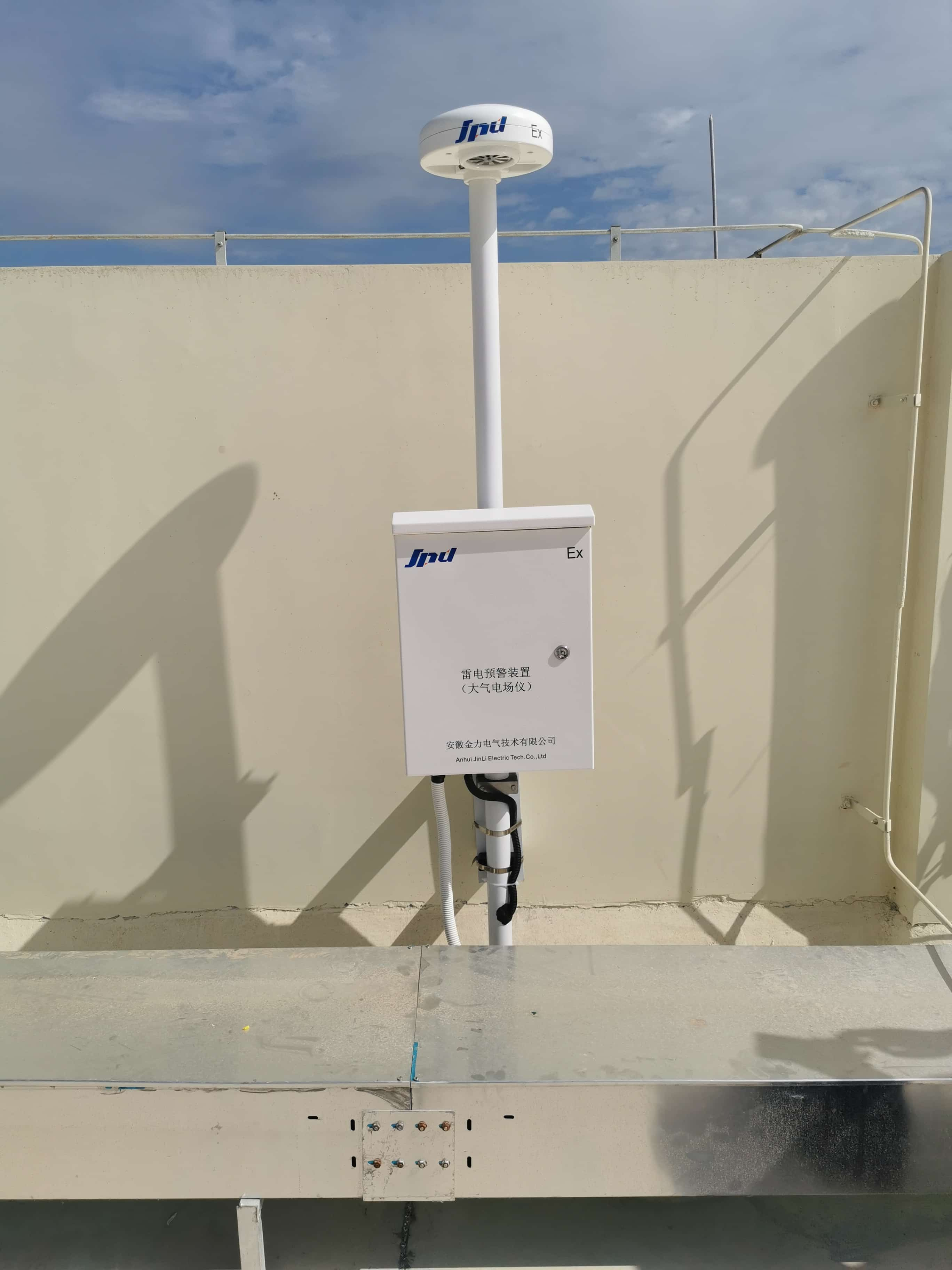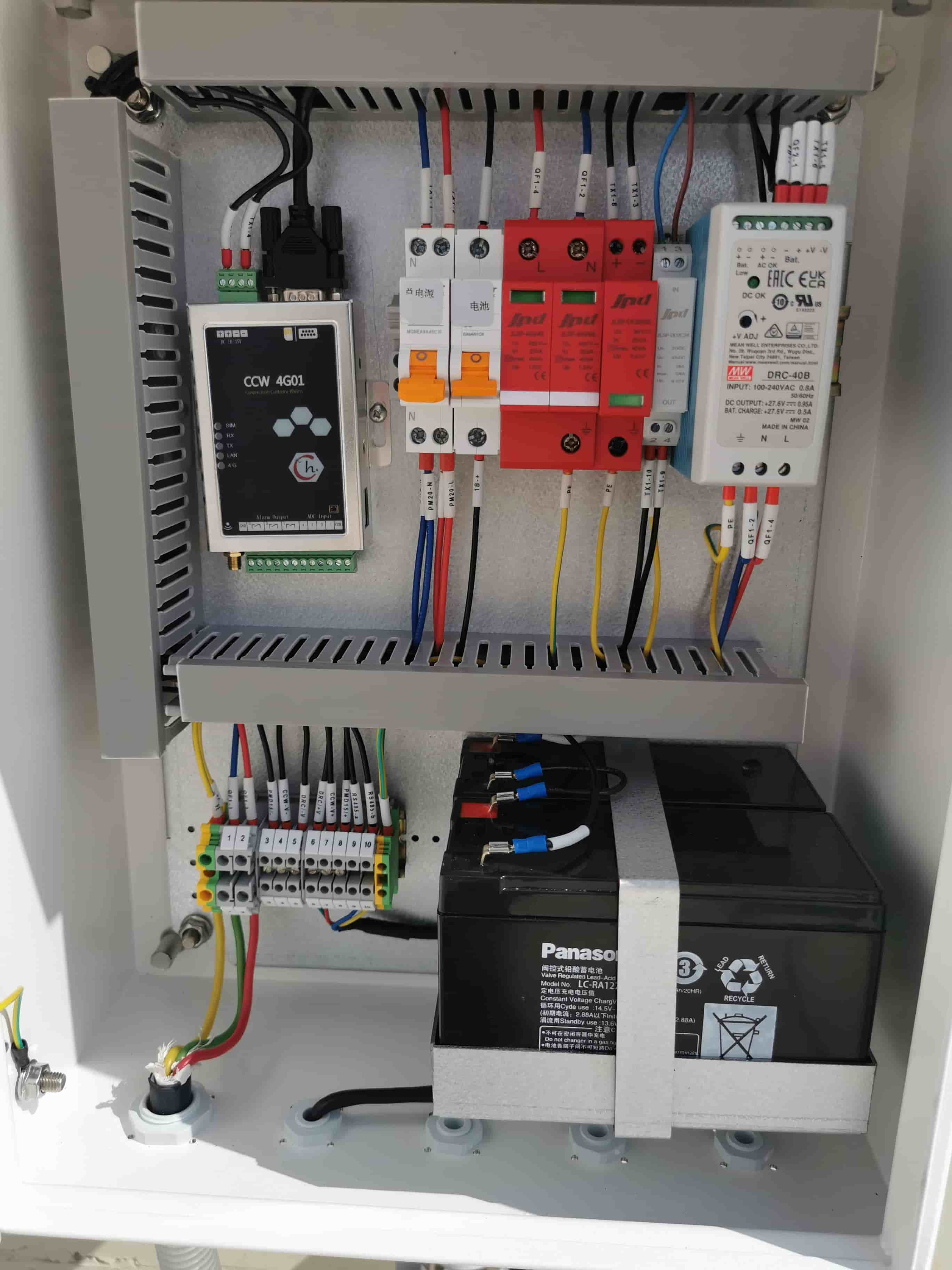Categories
New Blog
What are the components of the intelligent lightning protection system? What are the advantageas?
April 01 , 2025The intelligent lightning protection system introduces the concept of intelligence into the lightning protection system, integrating the three major modules of "intelligent SPD online monitoring" + "lightning warning online monitoring" + "ground resistance online monitoring". It uses modern microcomputers and communication technologies to collect monitoring and collected data, so that lightning protection can be predicted in advance, from the previous passive protection to active protection. At the same time, it is more convenient for lightning protection product maintenance and management to be more timely, more convenient and more effective. On the basis of the above functional modules, the intelligent lightning protection monitoring system also has a graphical operating system that integrates lightning protection, operation monitoring, equipment management, report analysis, historical records, warning and user management.
SPD online monitoring: real-time monitoring of the working status of theSPD (such as leakage current, residual voltage, aging degree) to ensure its effective operation.
Ground resistance online monitoring: Continuously measure the resistance value of the grounding system to detect poor grounding or corrosion problems in time.
Lightning warning online monitoring : Combines meteorological data with electric field sensors to predict lightning activity and issue warnings in advance.

Advantages analysis:
1. Real-time monitoring and active early warning
Limitations of traditional lightning protection: Relying on manual regular inspections (such as once a year), sudden problems may be missed (such as instantaneous failure of SPDs and damage to the grounding system after a lightning strike).
Advantages of intelligent systems
1)Real-time feedback of SPD status: Once the leakage current exceeds the standard or the residual voltage is abnormal, the system will automatically alarm and generate a maintenance work order.
2) Dynamic monitoring of ground resistance: When the ground resistance value exceeds the threshold, an alarm is triggered immediately to ensure safe discharge of current during lightning strike.
3) Lightning warning accuracy: predict lightning activities 30 minutes to 1 hour in advance togain protection time for key facilities (such as airports and data centers).
2. Data-driven preventive maintenance
Traditional method: Maintenance relies on experience and judgment, and it is difficult to predict the life of equipment.
Intelligent system: Through long-term data accumulation, analyze the aging rules of SPDs and the changing trends of grounding resistance, and formulate targeted maintenance plans.
Case: A chemical plant discovered the SPD leakage current in a certain area increased year by year through monitoring data,andavoided the paralysis of the production line caused by lightning strike after replacingthe spd in advance.
3. Improve safety and reduce losses
Direct benefits: Reduce the risk of fire and equipment damage caused by lightning strikes; protect sensitive equipment (such as medical instruments and servers) to avoid data loss or business interruption.
Indirect benefits: Reduce insurance claims and accident compensation costs; enhance corporate safety image and increase customer trust.
4. Reduce long-term operation and maintenance costs
Traditional model cost: Manual inspection is expensive, and repair costs for sudden failures are high.
Intelligent system cost: The initial investment is higher, but the frequency of failures can be reduced in the long term through preventive maintenance.
Data shows: after a communication base station adopted intelligent lightning protection, the average annual maintenance cost was reduced by 40% and the failure rate decreased by 70%.
Necessity analysis
1. Coping with the high sensitivity of modern equipment
As the integration of electronic devices increases, their ability to withstand surges decreases significantly. Traditional lightning protection can only protect against direct lightning strikes, whileintelligent systems can fully resist threats such as inductive lightning and operational overvoltage.
2. Adapt to complex environment needs
Special places: such as oil storage tank areas, data centers, high-speed rail stations, etc., have extremely high requirements for lightning protection reliability, and the real-time monitoring and early warning functions of the intelligent system are indispensable.
Geographic factors: Areas with high incidence of lightning (such as tropical and mountainous areas) require more precise protection strategies. Smart systems can optimize lightning protection layout through data analysis.
3. Promotion of regulations and standards
International standard: IEC 62305 explicitly requires continuous monitoring of lightning protection systems.
Domestic policy: GB/T 21431-2015 "Technical Specifications for Testing of Lightning Protection Devices for Buildings" encourages the use of online monitoring technology.
Industry requirements: Electricity, communications, transportation and other fields will gradually incorporateintelligent lightning protection into mandatory safety standards.
4. The inevitable trend of digital transformation
The advancement of concepts such as smart cities and Industry 4.0 requires the simultaneous intelligentization of infrastructure and safety management. As the core link of safety assurance, the lightning protection system must be integrated with the digitalization process.
